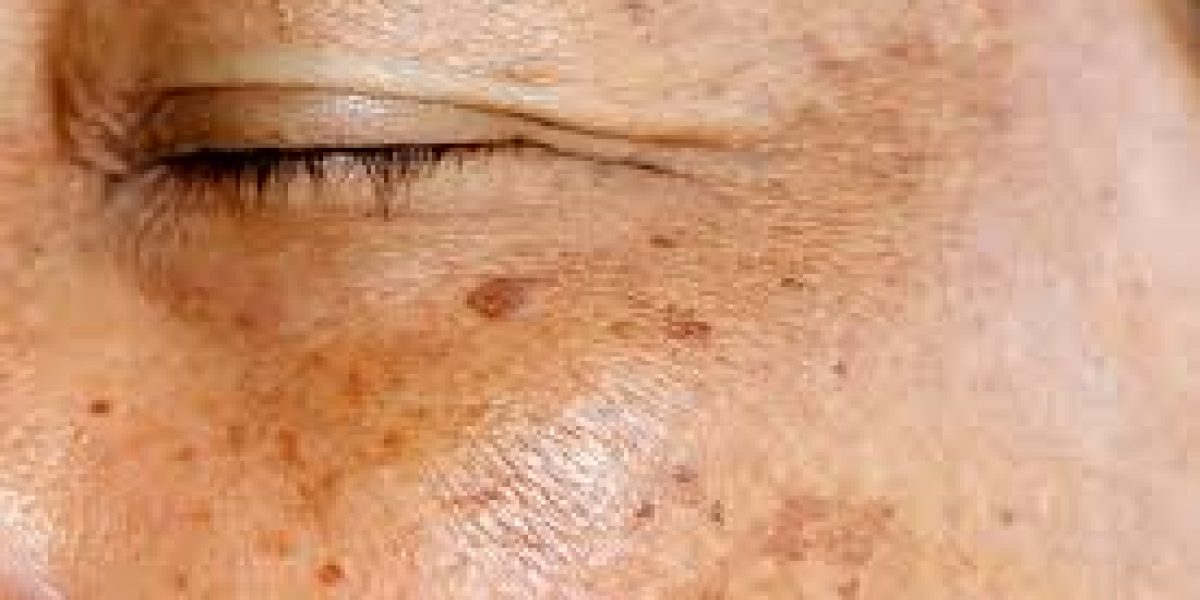One of the most common questions asked by individuals dealing with uneven skin tone is: “How soon can I see results from pigmentation treatment?” The answer depends on several factors, including the type of pigmentation, chosen treatment, and individual skin response. Whether it’s melasma, sunspots, post-inflammatory hyperpigmentation, or freckles, various methods target different layers of skin and offer varying timelines for visible improvement. In this article, we’ll uncover how pigmentation treatments work, what to expect during the process, and how you can speed up your path to clearer, brighter skin using modern techniques and consistent care.
What is pigmentation treatment and how does it work?
Skin Pigmentation Treatment in Dubai(علاج التصبغات في دبي) are designed to reduce the appearance of dark spots and restore a more even skin tone. These treatments work by either exfoliating the pigmented layers of skin or inhibiting melanin production at the cellular level. The effectiveness and timeline of results vary depending on the depth of pigmentation, skin type, and the specific method used.
Most treatments target the overproduction of melanin—whether it’s due to UV damage, acne scars, hormonal imbalances, or aging. Procedures like chemical peels, laser therapy, microneedling, and topical brightening agents help fade discoloration and promote healthy cell turnover. The skin doesn’t change overnight, but visible changes often begin within a few sessions or weeks. Mild pigmentation may respond faster, while deeper pigmentation such as melasma may require a longer, multi-step approach.
Why timely and proper treatment matters?
Delaying treatment of pigmentation may lead to deeper discoloration that becomes harder to reverse over time. Addressing the problem early through targeted pigment correction solutions can prevent worsening and provide quicker results. Timely treatment also prevents psychological distress, especially when pigmentation affects prominent areas like the face.
Properly managed treatments do more than just fade spots—they improve overall skin texture, boost radiance, and restore skin confidence. With modern advancements, many people experience dramatic improvements in both skin tone and clarity. Early action, combined with the right treatment, ensures faster and more sustainable results.
Types of pigmentation treatments and expected timelines:
The time it takes to see results depends on the chosen pigmentation removal method and the specific condition being treated. Here’s a look at different treatments and how soon they typically show improvement:
Chemical peels
-
Use acids like glycolic, salicylic, or TCA to exfoliate the top layer
-
Results: Initial improvement seen within 7–14 days
-
Best for mild to moderate hyperpigmentation and melasma
Laser therapy
-
Includes Q-switched, fractional, or Nd:YAG lasers
-
Breaks down melanin and stimulates collagen
-
Results: Visible lightening in 2–4 weeks, may require 3–6 sessions
-
Suitable for deep pigment, sunspots, and resistant cases
Microneedling with serums or PRP
-
Enhances absorption of depigmenting serums
-
Boosts skin regeneration
-
Results: Gradual changes in 3–6 weeks, with full results over several months
Topical treatments
-
Use hydroquinone, azelaic acid, retinoids, or vitamin C
-
Inhibit melanin production and fade discoloration over time
-
Results: Gradual fading in 4–8 weeks with consistent use
Dermabrasion or enzyme therapy
-
Physically or enzymatically removes dead skin cells
-
Improves mild pigmentation and surface clarity
-
Results: Immediate brightness; pigment lightening in a few weeks
Multiple sessions are often required for deeper issues like melasma or post-inflammatory hyperpigmentation, with each session building upon the previous one.
Preparation before starting pigmentation treatment:
Preparing your skin before treatment significantly impacts how quickly you see results. Here’s what you should do to ensure optimal outcomes:
-
Begin using a broad-spectrum sunscreen daily to prevent further pigmentation
-
Discontinue use of exfoliants or retinol products a week prior to treatment
-
Hydrate the skin with calming moisturizers
-
Avoid waxing, tanning, or harsh scrubs in the treatment area
-
Inform your skincare provider of any skin sensitivities, medications, or health conditions
A proper pre-treatment routine strengthens the skin barrier and reduces the likelihood of adverse reactions or delays in recovery.
Aftercare and factors influencing visible results:
Post-treatment care plays a crucial role in determining how soon results appear from pigmentation treatment. The healing process can affect both the speed and quality of your results. Here are essential aftercare steps to follow:
-
Apply soothing products like aloe vera or ceramide-rich moisturizers
-
Wear SPF 50+ sunscreen consistently, even indoors
-
Avoid heat exposure such as hot showers, saunas, or intense workouts for 48 hours
-
Refrain from picking or peeling treated skin
-
Follow your recommended topical product routine to maintain improvements
Additionally, individual factors such as skin type, lifestyle, and adherence to care instructions can influence the speed of visible results. Those with darker skin tones may need more conservative treatment plans to avoid post-inflammatory pigmentation.
Who is an ideal candidate for fast results?
Certain individuals tend to see quicker improvements, especially if their pigmentation is superficial or newly developed. Ideal candidates for faster results include those who:
-
Have mild to moderate pigmentation, such as freckles or sunspots
-
Follow a dedicated skincare routine and protect their skin from UV rays
-
Do not have active acne or inflammatory skin conditions
-
Are not currently undergoing hormonal changes
-
Have realistic expectations about the gradual nature of improvement
People with long-standing melasma or deeper pigmentation may still see significant benefits, but the process may take longer and involve more sessions.
How to choose the right skincare provider for optimal results?
Your results greatly depend on the expertise of the professional performing the treatment. Here’s how to choose the right provider:
-
Check qualifications and experience in pigmentation treatment
-
Ask for a personalized treatment plan tailored to your skin type
-
Look at verified before-and-after results
-
Inquire about the technologies or topical agents used
-
Ensure they offer a full consultation and skin analysis beforehand
-
Confirm that aftercare support and follow-up are provided
A good provider will prioritize skin safety, manage your expectations honestly, and help you get visible results faster through careful technique and customized care.
Potential risks and delays in treatment results:
While most pigmentation treatments are safe, there are risks and delays that may affect how soon you notice changes:
-
Post-inflammatory hyperpigmentation if skin isn’t cared for properly after treatment
-
Temporary redness, peeling, or dryness
-
Sun exposure causing recurrence or slowing progress
-
Hormonal imbalances interfering with melanin control
-
Skin sensitivity leading to slower healing
To reduce risks and speed up results, always follow pre- and post-treatment guidelines and avoid harsh DIY solutions or over-the-counter bleaching products.
Benefits of pigmentation treatment:
Investing in Skin Pigmentation Treatment(علاج التصبغات) brings several long-term advantages beyond clearer skin:
-
Even skin tone and a brighter complexion
-
Reduction in dark spots, patches, and sun damage
-
Boost in self-confidence and comfort without makeup
-
Healthier skin with improved texture and resilience
-
Enhanced effectiveness of other skincare products
-
Greater understanding of skincare habits and sun protection
The aesthetic improvement is accompanied by emotional satisfaction and better long-term skin management.
Frequently asked questions:
How soon can I see results from pigmentation treatment?
Depending on the method used and the type of pigmentation, visible improvement may appear within 7–14 days for surface-level pigmentation and 4–8 weeks or more for deeper issues like melasma.
Is one session enough to remove pigmentation?
No, most treatments require multiple sessions, especially for chronic or deep pigmentation. Mild sunspots may fade after one peel or laser session, but lasting results need consistency.
What’s the fastest way to get rid of pigmentation?
Combining professional treatments like peels or lasers with daily use of topical brighteners and sun protection can accelerate fading.
Can I speed up results with home care?
Yes, using vitamin C, retinoids, and SPF consistently at home can maintain and enhance clinical results.
Will the pigmentation come back?
It can if the underlying cause (sun exposure, hormones, acne) isn’t addressed. Maintenance treatments and good skincare help prevent recurrence.
Conclusion:
How soon can I see results from pigmentation treatment? The timeline varies based on your skin type, the type of pigmentation, and the treatment method chosen. While some people notice brighter, more even skin within two weeks, others may need multiple sessions and ongoing care. The key to faster and lasting results lies in personalized treatment, diligent aftercare, and proactive skin protection. With the right combination of professional intervention and home care, visible transformation is not only possible but also achievable within a realistic and satisfying timeframe.











